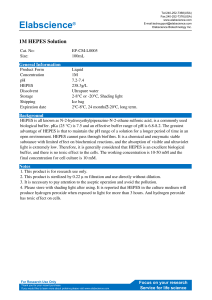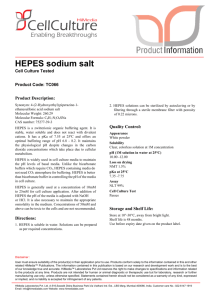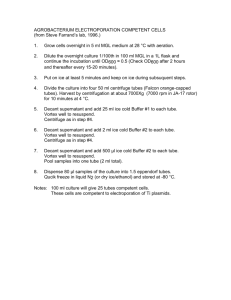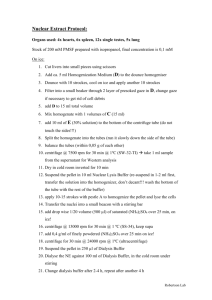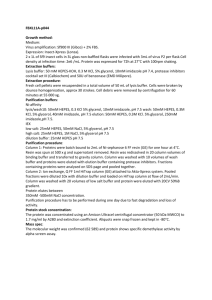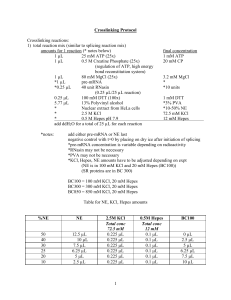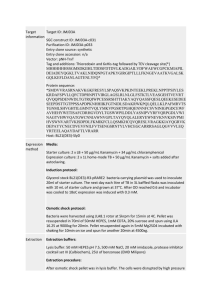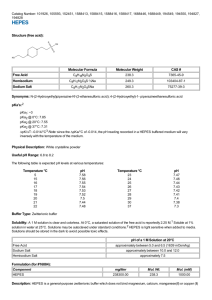HEPES (Free Acid)
advertisement
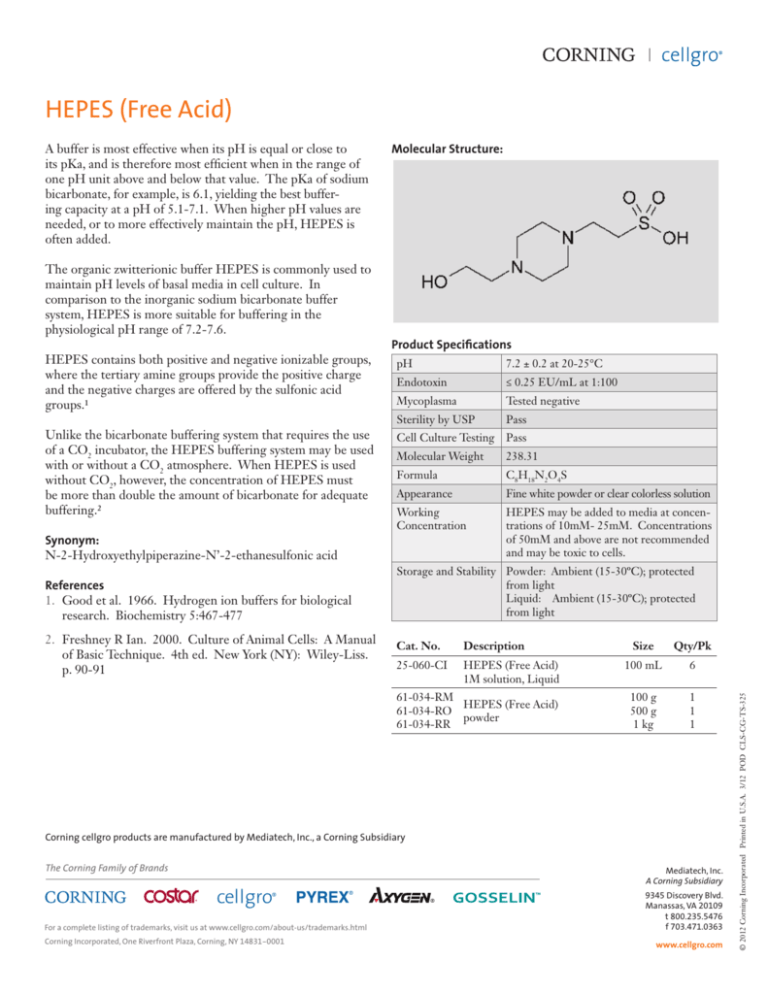
HEPES (Free Acid) The organic zwitterionic buffer HEPES is commonly used to maintain pH levels of basal media in cell culture. In comparison to the inorganic sodium bicarbonate buffer system, HEPES is more suitable for buffering in the physiological pH range of 7.2-7.6. HEPES contains both positive and negative ionizable groups, where the tertiary amine groups provide the positive charge and the negative charges are offered by the sulfonic acid groups.¹ Unlike the bicarbonate buffering system that requires the use of a CO2 incubator, the HEPES buffering system may be used with or without a CO2 atmosphere. When HEPES is used without CO2, however, the concentration of HEPES must be more than double the amount of bicarbonate for adequate buffering.² Synonym: N-2-Hydroxyethylpiperazine-N’-2-ethanesulfonic acid References 1. Good et al. 1966. Hydrogen ion buffers for biological research. Biochemistry 5:467-477 2. Freshney R Ian. 2000. Culture of Animal Cells: A Manual of Basic Technique. 4th ed. New York (NY): Wiley-Liss. p. 90-91 Molecular Structure: Product Specifications pH 7.2 ± 0.2 at 20-25°C Endotoxin ≤ 0.25 EU/mL at 1:100 Mycoplasma Tested negative Sterility by USP Pass Cell Culture Testing Pass Molecular Weight 238.31 Formula C8H18N2O4S Appearance Fine white powder or clear colorless solution Working Concentration HEPES may be added to media at concentrations of 10mM- 25mM. Concentrations of 50mM and above are not recommended and may be toxic to cells. Storage and Stability Powder: Ambient (15-30ºC); protected from light Liquid: Ambient (15-30ºC); protected from light Cat. No. Description 25-060-CI HEPES (Free Acid) 1M solution, Liquid 61-034-RM HEPES (Free Acid) 61-034-RO powder 61-034-RR Size Qty/Pk 100 mL 6 100 g 500 g 1 kg 1 1 1 Corning cellgro products are manufactured by Mediatech, Inc., a Corning Subsidiary The Corning Family of Brands ® cellgro® Mediatech, Inc. A Corning Subsidiary ® For a complete listing of trademarks, visit us at www.cellgro.com/about-us/trademarks.html Corning Incorporated, One Riverfront Plaza, Corning, NY 14831-0001 ® 9345 Discovery Blvd. Manassas, VA 20109 t 800.235.5476 f 703.471.0363 www.cellgro.com © 2012 Corning Incorporated Printed in U.S.A. 3/12 POD CLS-CG-TS-325 A buffer is most effective when its pH is equal or close to its pKa, and is therefore most efficient when in the range of one pH unit above and below that value. The pKa of sodium bicarbonate, for example, is 6.1, yielding the best buffering capacity at a pH of 5.1-7.1. When higher pH values are needed, or to more effectively maintain the pH, HEPES is often added.
